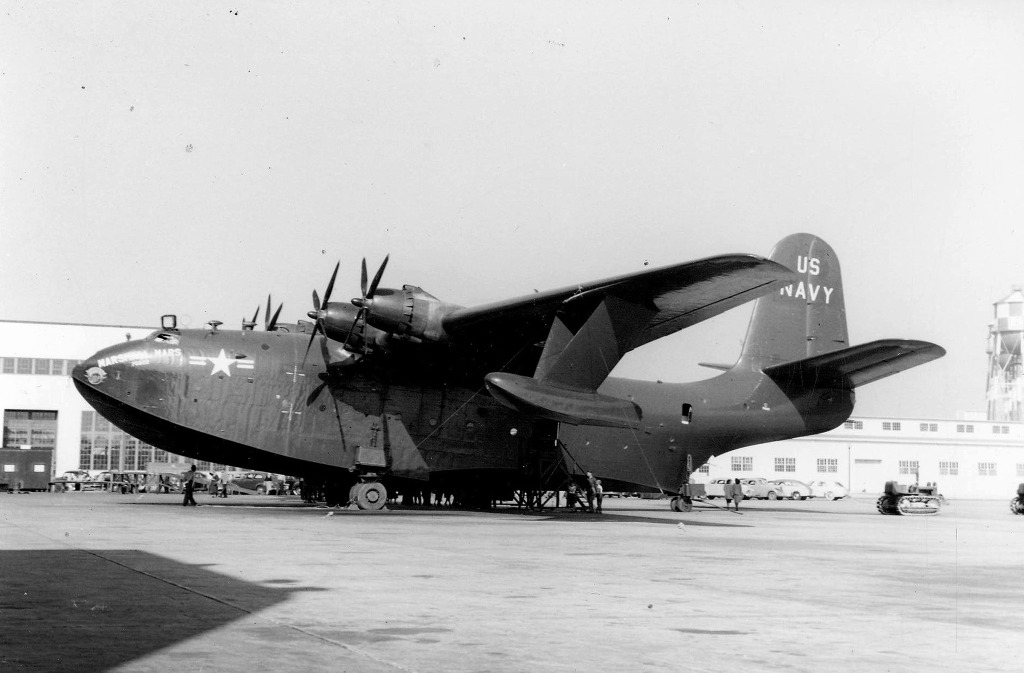
19 May 1949: Martin JRM-3 Mars, Marshall Mars, United States Navy Bureau of Aeronautics serial number (Bu. No.) 76822 flew from the Alameda Naval Air Station on the east shore of San Francisco Bay, to San Diego Bay, a distance of approximately 450 miles (725 kilometers). On board, in addition to the flight crew of 7, were 301 passengers.
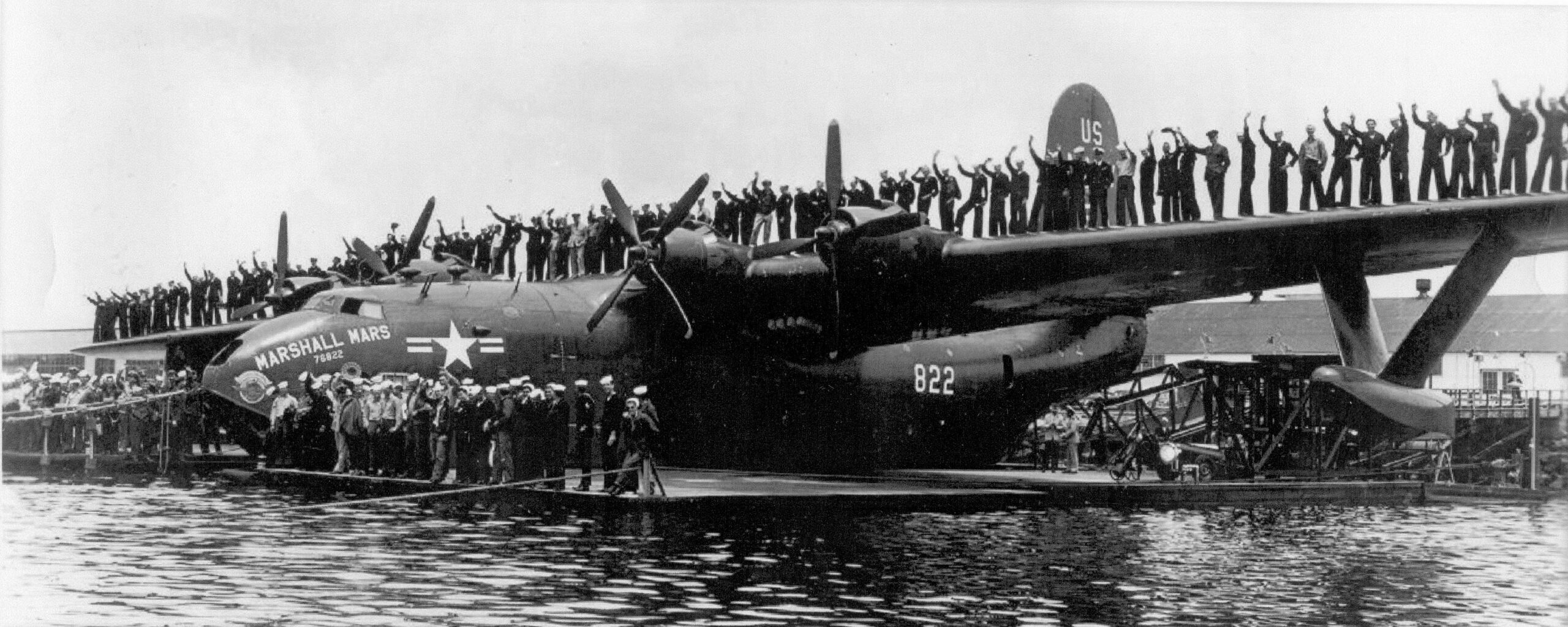
The Associated Press wire service reported the story:
NAVY’S BIG FLYING BOAT MARSHALL MARS CARRIES 301 PERSONS
SAN FRANCISCO, May 19—(AP)—The Navy’s big flying boat Marshall Mars carried a record load of 301 passengers—plus seven crewmen—on a flight to San Diego today.
It had never carried more than 269 passengers before.
The 1:52 p.m. takeoff, from the naval air station at Alameda, across the bay, was uneventful.
Today’s passengers are personnel of Air Group 5, Alameda Naval Air Station, who are being transferred to San Diego. Mattresses on the floor were provided for men unable to find seats.
—Wilmington Morning Star, Friday, 20 May 1949, Page 1, Column 4.
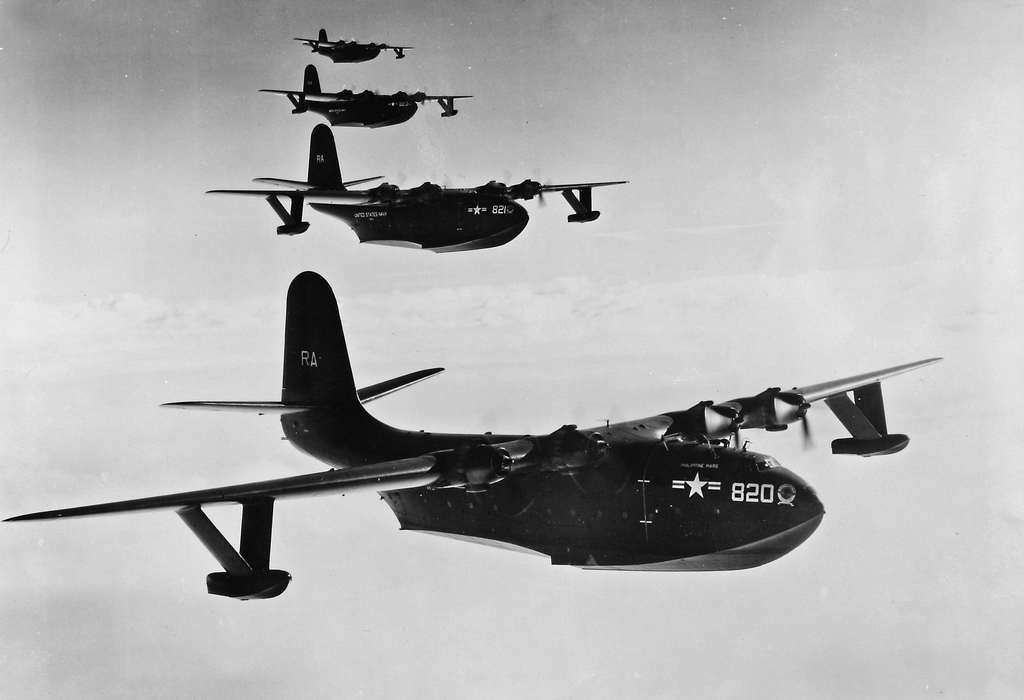

The Martin JRM-3 Mars had a normal crew of 4, with accommodations for a relief crew. It was designed to carry 133 combat troops or 32,000 pounds (14,515 kilograms) of cargo. It was 120 feet, 3 inches (36.652 meters) long with a wingspan of 200 feet (60.960 meters) and height of 38 feet, 5 inches (11.709 meters). The flying boat had an empty weight of 80,701 pounds (36,605.4 kilograms). The maximum takeoff weight (MTOW) was 165,000 pounds (74,842.7 kilograms).
A NASA publication states, “A zero-lift drag coefficient of 0.0233 and a maximum lift-drag ratio of 16.4 made the JRM the most aerodynamically efficient of any of of the flying boats. . . .”
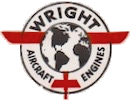
The JRM-3 had a cruise speed of 135 knots (155 miles per hour/250 kilometers per hour) and a maximum speed of 211 knots (243 miles per hour/391 kilometers per hour) at 15,600 feet (4,755 meters). The service ceiling was 19,700 feet (6,005 meters) and its range was 3,790 nautical miles (4,361 miles per hour/7,019 kilometers) at 135 knots.
On 5 April 1950, Marshall Mars had an engine fire and made an emergency landing off Diamond Head, Hawaii. The crew was rescued but the airplane exploded and sank. The wreck was discovered on the sea floor in August 2004.
The remaining airplanes were later converted to fire fighting airplanes in Canada. Only two remain.
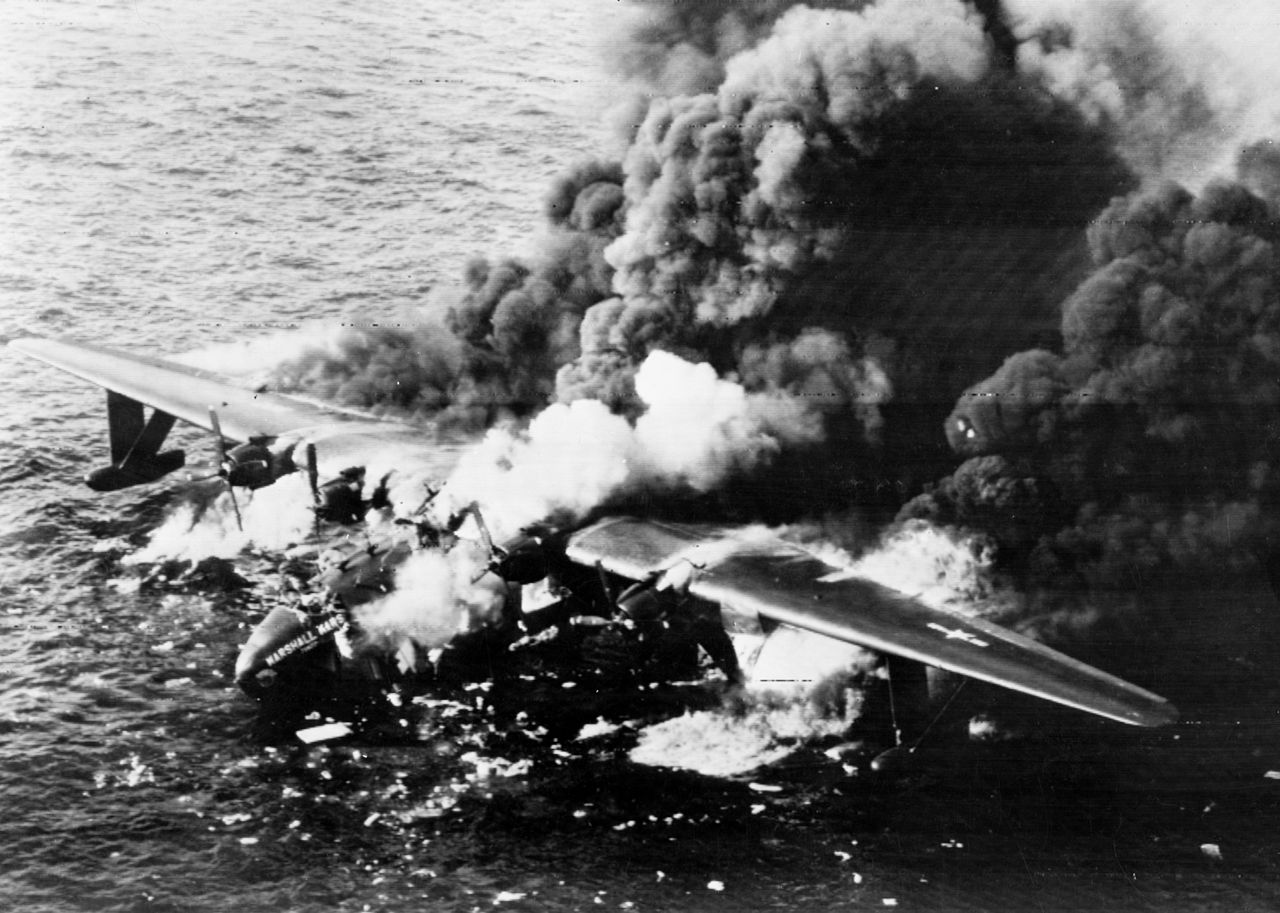
© 2020, Bryan R. Swopes
Thank you for this info on the JRM-3. I took my first flight, at the tender age of 2, on this aircraft in 1946 when I flew with my mother from Alameda NAS to Pearl Harbor to join my father who was stationed there with the Marine Corps. My mother says I did fine on the flight until we arrived over Pearl Harbor. The Navy was conducting ship drills in the harbor and we had to circle overhead for some time until they were through and we could land. The continuous circling was more than my little tummy could handle and I had my first bout of air sickness. This is the only memory I have of that flight.
So you’re sort of a “plank owner” of the Martin Mars. 🙂
It seems sad that the age of these seaplanes ended with early 50’s. The JRM-3 was going to be enlarged but lost the contract to Hughes H-4 and the airlines had no interest in them post war, though one lasting element of that age are the airline pilot uniforms today, due to Mr Tripp
Philippine Mars and Hawaii Mars are (were?) owned by Coulson Air Tankers, (Martinmars.com), not far from where I live. Unfortunately, their firefighting days are over. News release here (2018): https://www.albernivalleynews.com/news/martin-mars-waterbombers-firefighting-days-are-past-coulson/
The Hawaii Mars is an aviation museum, in saanich bc at the Victoria airport …. The Philippine Mars over the last six months has been moved from Canada to Scottsdale, Arizona aviation Museum
Philippine Mars arrived at the Pima Air & Space Museum in Tucson, Arizona, on 17 May 2025.
My Dad flew the Mars in the late 40s. He is still alive and kicking at the age of 100. Was also a Pearl survivor and WW2 PBM and PBY pilot in the Pacific.
Does your father remember a plane commander by the name of William ( Bill ) McSharry .
I served as a Flight Orderly on the MARS flights between NAS Alameda and Honolulu, TH during the years 1954 to 1957. Now 92yrs old and psbly only Black Female to serve in that particular capacity.
Very well done! Thank you!
“… one lasting element of that age are the airline pilot uniforms today, due to Mr Tripp” – sounds like there’s a story in that, care to elaborate?
I’m guessing that this refers to Mr. Juan Trippe who owned Pan Am. The uniforms are a legacy passed down from the Clippers which dominated air service in the 1930s and was derived from the clipper ocean liners
https://www.clipperflyingboats.com/.
I was a pilot in VR-2 in 1946 and became one of the Plane Commanders. Great plane to fly.
I was in VR-2 July 1946 – December 1947. Have many pilot names in my flight log. Like to talk with any of them. One flight as Plane Commander, had appendix attack , Navy Dr. took me to hospital, operated that day, returned to Alameda next day as passenger.
VR-2 was great squadron Mars was a great plane to fly.
Do you remember William ( Bill ) McSharry
When my dad got orders from Moffitt Field to Barbers Pt. In 1957 we were flown over on a Mars out of Alameda to Honolulu. Remember the plane taking off in the evening out of San Francisco Bay and arriving in Honolulu the next morning. My understanding is it was the last flight from Alameda to Honolulu. And was retired after it’s return flight from Honolulu to Alameda. But I would be interested if anyone has any further info.
My father was one of the 301 passengers on the Marsahall Mars. This was one of his fondest memories and he was proud of making history that day.
Very cool, Debra!